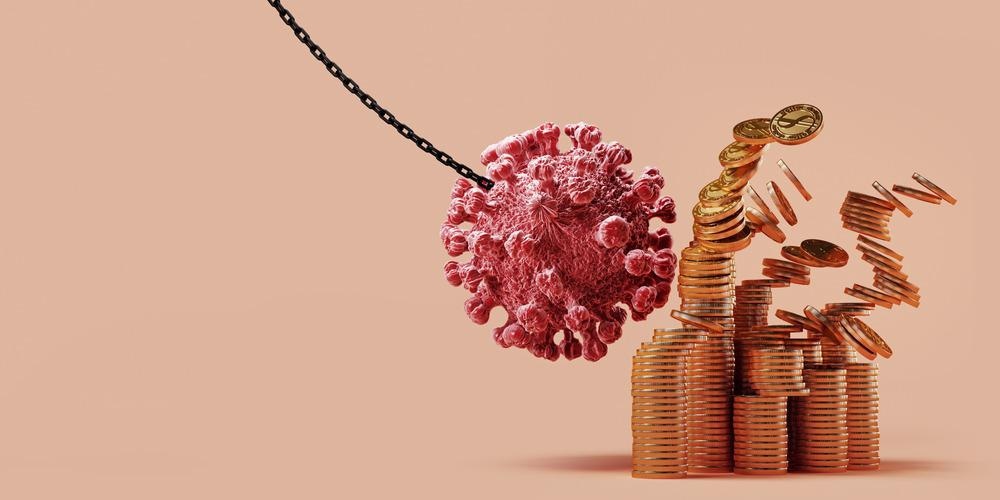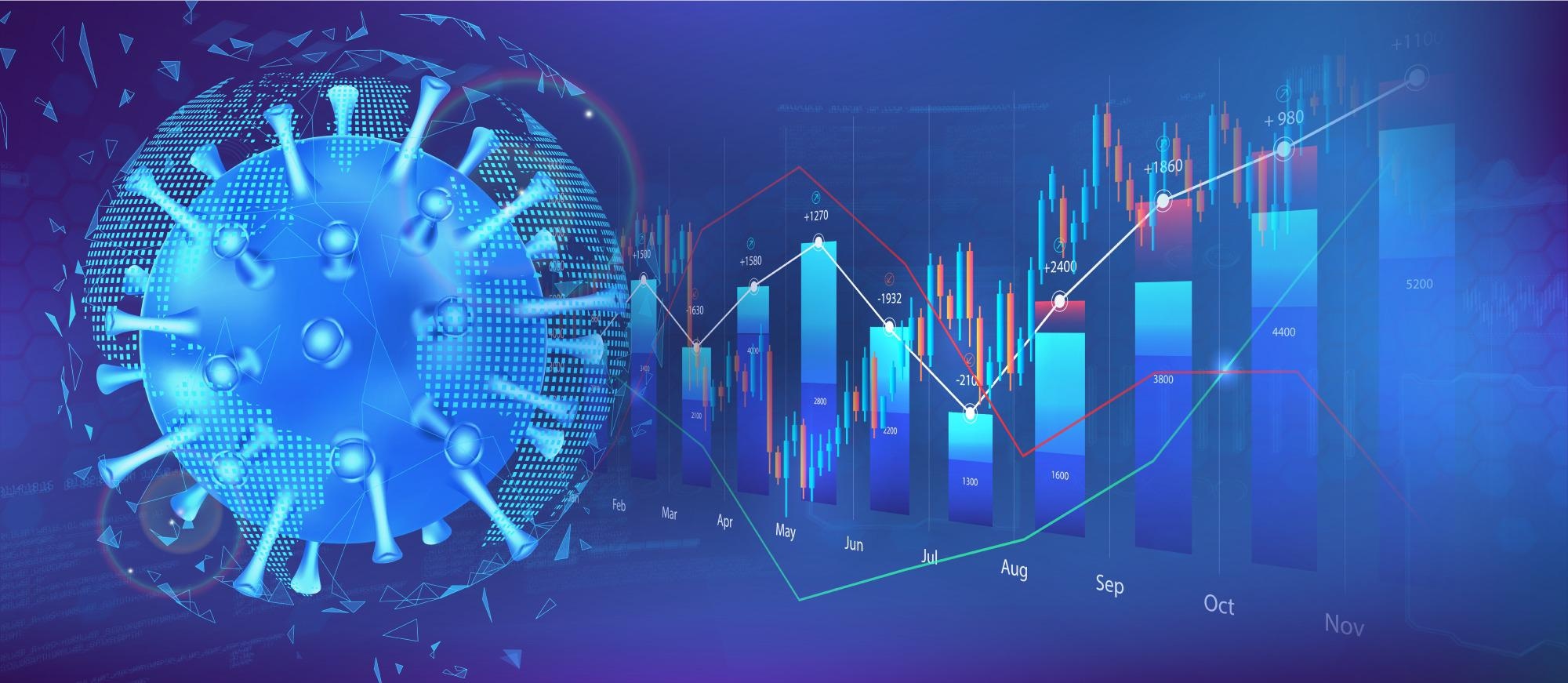At CREATE, I have focused on the economic consequences of, and resilience to, disasters. I’ve spearheaded the development of our Economic Consequence Analysis (ECA) framework, and have applied it to numerous case studies, including the economic impacts of the 2001 World Trade Center Attacks, various natural disasters, and an influenza pandemic, prior to my research on COVID-19.
The two innovative features of this framework are economic resilience and behavioral responses. There are several tactics associated with the first of these types of responses applicable to COVID-19, most notably telework. The main behavioral response, in this case, is avoidance of activities where people would be exposed to the disease, including government decisions restricting activities.
What aspects of the COVID-19 pandemic have impacted the U.S. economy?
Adam Rose (Economist): My research team identified the following factors responsible for the majority impacts COVID-19 has on the US economy, nearly all of which are either economic resilience or behavioral responses:
1. Mandatory closures [Behavioral Linkage]
2. Reopenings [Behavioral Linkage]
3. Workforce declines due to health issues [Direct Effects]
4. Telework [Resilience]
5. Consumption and workforce declines due to avoidance [Behavioral Linkage]
6. Changes in net demand for health care services [Direct Effects of Pandemic and Behavioral Linkage in part]
7. Pent-up demand [Resilience]
8. Stimulus packages [Resilience at the macroeconomic level]
9. Indirect effects of all of the above

Image Credit: 3DJustincase/Shutterstock.com
Your work analyzed direct behavioral responses to the pandemic including resilience and avoidance behavior. What do these mean and why did they result from COVID-19?
Richard John (Psychologist): People avoided contact with others during the pandemic either because of government-mandated closures or in an individual effort to reduce their possible exposure to the COVID-19 virus. These behavioral responses can reduce the risk of being infected with COVID-19, as well as substantially impacting economic activity and an individuals’ overall well-being.
Dan Wei (Geographer): Resilience refers to various actions taken by producers, consumers, and government to bounce back or recover from a shock and mute the overall impacts. In our analysis, we include two major aspects of resilience: 1) the increase in telework during mandatory closures; and 2) the injection of pent-up demand at later stages of the recovery.
Telework has been one of the most important resilience tactics for many sectors to maintain certain levels of production or operation during the mandatory shutdown of non-essential businesses and the phased-in reopening process.
The weighted average telework potential across economic sectors was over 40% at the beginning of the pandemic and reduced to about 30% as the economy gradually reopened. Telework potentials vary greatly across sectors, ranging from about 8% for Leisure and Hospitality sectors to over 70% for Financial and Education sectors during the current pandemic.
Consumer demand is built up during mandatory closures because people were unable (because of the shutdown of business) or unwilling (because of avoidance of exposure to the COVID-19 virus) to make purchases. Pent-up demand refers to the increased consumer spending on big-ticket items such as cars and other durable goods, as well as on travel, restaurants, hotels, entertainment activities, etc. when the economy reopens. Pent-up demand can be crucial to the recovery of the economy.
How did you analyze the economic impacts of avoidance behavior and resilience and what did you find?
Richard John: An electronic survey of 1600 randomly selected individuals was undertaken to ask specific questions about avoidance of 10 different types:
- Staying home from work
- Keeping children home from school
- Canceling or postponing medical and dental appointments
- Canceling or postponing professional grooming and spa treatments
- Canceling or postponing domestic and international air travel
- Avoiding public transportation, e.g., taking the bus, rideshare
- Avoiding local leisure activities, e.g., dining out, bars
- Avoiding shopping, e.g., grocery, miscellaneous shopping
- Avoiding recreational activities, e.g., golf, tennis, swimming
- Avoiding large crowds, e.g., sports events, concerts, shows
Dan Wei: Data on the percentage of telework potentials in response to the COVID-19 pandemic by economic sector by month were collected from the U.S. Bureau of Labor Statistics. These numbers are used to adjust the direct percentage reduction of production by sector due to mandatory closures and the phased-in reopening process in the economic impact modeling. Pent-up demand by major consumption categories is estimated based on micro-level data from three distinct sources that track consumer credit card spending or foot traffic data at retail locations across different industries.
Our results indicate that both telework and pent-up demand represent important sources of economic resilience that help reduce the negative impacts from shutdowns and individual avoidance behaviors during the pandemic.

Image Credit: Corona Borealis Studio/Shutterstock.com
Which industries suffered the most economically over the course of the pandemic due to behavioral avoidance?
Adam Rose: The sectors most affected include:
Negatively: Health Services, Hotels, Restaurants, and Air Travel
Positively: Communication Services, E-Commerce, and Delivery Services
What aspects of the pandemic caused the largest economic losses?
Dan Wei: The largest GDP losses from COVID were associated with the mandatory closure of businesses and the slow reopening process. Various types of avoidance behavior, such as staying home from work, canceling travels, avoiding in-person shopping and leisure activities, also contributed significantly to the decline in GDP.
What lasting effects do you think we will see from businesses and households changing their behaviors during the pandemic?
Richard John: Reduced in-person school attendance is likely to negatively impact academic progress for an entire generation of children. No one knows the extent to which these impacts can be mitigated after the pandemic.
Reductions in individuals seeking routine medical exams and diagnostic procedures are likely to shorten the expected lifespan for the U.S. population. These avoidance behaviors during the pandemic are likely to result in a lowered lifespan for many, as well as a reduced quality of life due to the avoidance of medical visits.
Avoidance of social contact with other people is likely to result in an increase in mental health problems, including substance abuse, depression, and domestic violence. The full impacts of these avoidance behaviors will not be known for several years.
Juan Machado (Public Policy Analyst): One possibility, however, is that remote work will become more prevalent for certain sectors and roles. This change could make businesses in those sectors more resilient to future disasters and other types of disruption.
Terrie Walmsley (Economist): In addition to remote work, there has also been a shift towards using more capital (e.g., automation), which could have a long-run impact on jobs and wages.
How is the economy recovering?
Adam Rose: The economy has generally been on a recovery trajectory, except during additional “waves” of disease spread when avoidance behavior and social distancing subside, during winter months, and when new variants appear. At present, our analysis indicates that the earliest the economy would be fully recovered is 2023.
Terrie Walmsley: We also see the recovery process struggle as supply recovers much more slowly than demand, which rises considerably with pent-up demand and the fiscal stimulus rounds. Prices rise, and exports and investment fall.
Does more need to be done to mitigate the effects of the pandemic on the economy?
Juan Machado: Our results suggest fiscal stimulus has hit a limit; the first rounds, including the CARES Act, had a positive and significant impact on the recovery, but the latest rounds have been less helpful as government spending crowded out investment.
At the same time, some households and businesses certainly continue to be deeply affected by the pandemic. If the U.S. Congress considers a new stimulus bill, it should be narrowly targeted so that it reaches the most impacted individuals and businesses.

Image Credit: SergeyBitos/Shutterstock.com
How can this work be used to prepare for any future pandemic and reduce negative impacts on our economy?
Jakub Hlávka (Health Economist): It is much less costly to control the pandemic in the early stages through targeted measures. By limiting the number of cases in the community, as many other advanced economies did, it is much more feasible to trace infections, develop quarantine programs that do not require parts of the economy and society to shut down, and use affordable tools such as testing to ensure that the pandemic does not grow out of control.
This also helps the healthcare system avoid deferring elective procedures and treating patients with other conditions. Once vaccines become available, less stringent measures need to be in place to achieve the same level of mitigation.
Richard John: Every state in the U.S. has taken a unique approach in mandating restrictions and requirements on individuals and businesses, partly because states differ in important ways and partly due to political identities. This variation in policy allows for a vast natural experiment in how public policies impact public well-being and safety, including hospitalizations and deaths. It would be an enormous waste if we were to ignore the data available for sorting out which policies were effective and how we might craft empirically validated optimal public policies for future pandemics.
How could the analytical framework you have created be applied to other types of disasters?
Adam Rose: The CREATE ECA Framework has established a record, having been applied to the following types of disasters: earthquakes, floods, hurricanes, tsunamis, severe winter storms, biothreats, nuclear and radiological threats, and terrorist attacks. The key is to identify the causal factors. The audience is referred to the following book, which contains a chapter on enumerating these factors:
Rose, A., F. Prager, Z. Chen, and S. Chatterjee. 2017. Economic Consequence Analysis of Disasters: The E-CAT Software Tool. Singapore: Springer. doi.org/10.1007/978-981-10-2567-9
What is the next step for this work?
Several areas of future research present themselves. A prime example would be developing future scenarios involving new COVID-19 variants, more effective vaccines, and more effective anti-viral treatments. Another would be conducting surveys to ascertain the long-term impact of avoidance and changes in the way people work.
Survey research can also be extended to improve the accuracy of estimates of pent-up demand by major consumption categories. An additional topic area would be to examine the macroeconomic consequences of supply-chain bottlenecks caused by the pandemic.
Where can readers find more information?
About Professor Adam Rose
Adam Rose, Ph.D., is a Research Professor in the University of Southern California Sol Price School of Public Policy, and Director of USC’s Center for Risk and Economic Analysis of Terrorism Events (CREATE). Professor Rose’s primary research interest is the economics of disasters. He has spearheaded the development of CREATE’s comprehensive economic consequence analysis framework and has done pioneering research on resilience at the level of the individual business/household, market/industry, and regional/national economy. He has also completed dozens of case studies of disaster consequences, resilience, and recovery, including the September 11 terrorist attacks and several seaport disruption scenarios.
He is currently the PI on an NSF grant on advanced computational methods to improve reliability and resilience of interdependent systems and a contract with the Critical Infrastructure Resilience Institute to measure static economic cost-effectiveness of individual resilience tactics. Professor Rose has served as the American Economic Association Representative to the American Association for the Advancement of Science and as a member of the Board of Directors of the National Institute of Building Sciences Multi-Hazard Mitigation Council.
He is the recipient of the Distinguished Research Award from the International Society for Integrated Risk Management (IDRiM), a Woodrow Wilson Fellowship, East-West Center Fellowship, American Planning Association Outstanding Program Planning Honor Award, Applied Technology Council Outstanding Achievement Award, Regional Economic Models Outstanding Economic Analysis Award, and DHS/CREATE Transition Product of the Year Award. He is also an elected Fellow of the Regional Science Association International.
About Professor Terrie Walmsley
Terrie Walmsley, Ph.D., is an Assistant Professor in the Practice of Economics in the Department of Economics at the University of Southern California where she teaches International Trade and Trade Policy. She is also a Research fellow at CREATE. Dr. Walmsley has published numerous papers on issues related to trade and migration; as well as developed several models and other tools that are used extensively worldwide to examine global policy issues related to trade and the environment. She has also led a number of research projects for the World Bank, Asian Development Bank, US International Trade Commission, European Commission, OECD, UN Economic and Social Commission for Asia and the Pacific, UN Economic Commission for Africa, Japanese International Cooperation Agency (JICA), the Department for International Development (UK) amongst others.
Between 2003 to 2013, Dr. Walmsley was the Director of the Center for Global Trade Analysis at Purdue University, where she was responsible for the operations and strategic direction of the Center and the GTAP model and database.
About Professor Richard John
Richard John, Ph.D., serves as Professor in the Department of Psychology at the Dornsife College of Letters, Arts & Sciences at USC and as Associate Director and Research Fellow at CREATE. His research focuses on normative and descriptive models of human judgment and decision making and methodological issues in the application of decision and probabilistic risk analysis (PRA). He has consulted on a number of large projects involving expert elicitation, including analysis of nuclear power plant risks (NUREG 1150) and analysis of cost and schedule risk for tritium supply alternatives.
He has over 50 refereed publications, including top journals published by The Institute for Operations Research and Management Science (Management Science, Information Systems Research, Interfaces), The Society for Risk Analysis (Risk Analysis), and the American Psychological Association (Law and Human Behavior, Journal of Clinical and Consulting Psychology, Journal of Abnormal Psychology, and Journal of Family Psychology), and well as other top journals related to judgment and decision making, e.g., Organizational Behavior and Human Decision Processes, Journal of Empirical Legal Studies, Jurimetrics.
About Professor Dan Wei 
Dan Wei, Ph.D., is a Research Associate Professor at the USC Sol Price School of Public Policy, and Research Fellow of USC's Center for Risk and Economic Analysis of Threats and Emergencies (CREATE). One of her main research interests is the economic consequence of disasters (including health threats), with a special focus on the role of economic resilience. She made significant contributions in the studies of the economic impacts of four major disaster scenarios for the U.S. Geological Survey.
She has led two studies funded by the California Department of Transportation that focus on analyzing the socioeconomic dimensions of resilience to seaport and highway transportation network disruptions. She is currently a co-PI on an NSF study to apply edge computing to improve the reliability and resilience of interdependent infrastructure systems. Dr. Wei’s other research interests include modeling of economic and distributional impacts of climate and energy policies.
About Professor Jakub Hlávka
Jakub Hlávka, Ph.D., is a Research Assistant Professor in the Health Policy and Management Department of the Price School of Public Policy and Schaeffer Center for Health Policy & Economics, University of Southern California. His NIH-funded research focuses on the modeling of dementia treatments and associated economic challenges, with a specific focus on Alzheimer’s disease and emerging disease-modifying therapies.
He is also working on the study of non-pharmaceutical pandemic interventions and estimating their costs and benefits. His broader research interests include innovative payment models for pharmaceuticals, health system reform, and the study of inequality.
About Juan Machado
Juan Machado, MPP, is a Research Associate at the Center for Risk and Economic Analysis of Threats and Emergencies (CREATE).